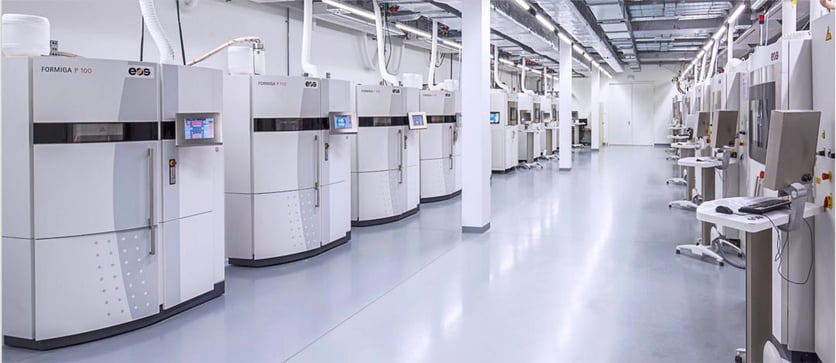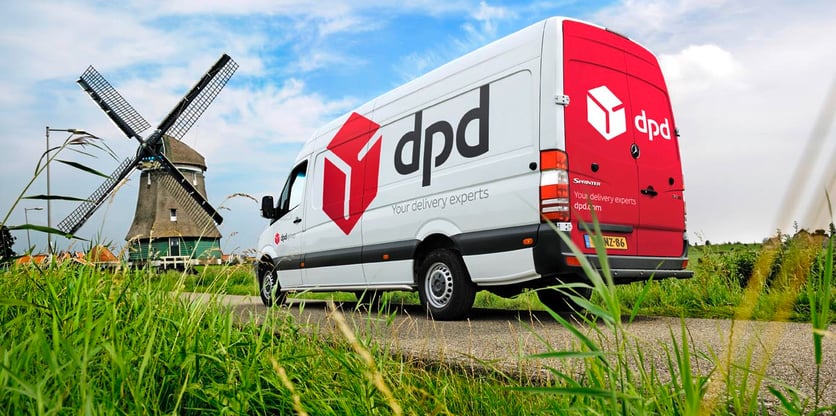3YOURMIND Partners With DPD to Redifine Logistics
Integrating Additive Manufacturing with logistics will enable mobile and dynamic production. The future combination of additive manufacturing and logistics will enable a new era of on-demand manufacturing. 3YOURMIND is partnering with DPD Germany to reinvent the Supply Chain Management.
2015.png?t=1478613609025&width=113&name=DPD_logo(red)2015.png)

We are experiencing remarkable changes in people’s lives where radical changes happen in a matter of months or days. The Digital Revolution and telecommunications have fundamentally modified the way time and space is conceived, making distances shorter and shorter. This has affected industry and logistics infrastructure (the rise of Amazon) and is now increasingly affecting individuals.
What makes this change so transcendental is its scope and the scale upon which processes are simplified. We have entered a point that changes aren’t limited to a single industry or product, but can affect industrial foundations and reach the most remote locations in the world. But how is this possible?
 Image Source: cache-blog
Image Source: cache-blog3D PRINTING Enables Supply Chain Innovation
Industrial production has been the first to benefit from quicker prototyping, and it is also the sector that has contributed most to speeding the pace of innovation. Those businesses who have incorporated 3D technology and additive manufacturing processes are beginning to reap the rewards as the technology matures. In particular, there is a shift towards decentralization and the opening of a market for mass-customization.
This has been a natural shift following the digitalization of the design process in the late 1990s. Suddenly there was the option to collaborate across large distances and create iterative designs at a much cheaper cost.
The maturing of additive manufacturing has expanded that access to the production floor. The software and hardware combinations make it is possible to design a product and 3D print in a variety of materials with high resolution, exactly as it was designed. The cost for additive manufacturing has already dropped below traditional production methods at low volume outputs. And this shift will continue.
 Image Source: EOS
Image Source: EOS What is the future of this technology and what will be the impact on the daily aspects of production?
- Combining Production with Mobility: 3D printers are becoming more and more like small factories in terms of quality. But they represent a unique paradigm in that they can be operated remotely, in reduced space and are highly customizable and transportable. As we see a convergence with alternative energies and self-powered devices it will become possible to operate the machines while being transported and in remote off-grid production locations.
 Image Source: DPD
Image Source: DPD- The other fundamental shift that is occurring is 3D printers are able to cost effectively handle multi-material manufacturing. This eliminates the necessity of acquiring several machines to print one single product, significantly decreases the manufacturing time, reducing the space requirement and can even completely eliminate the need to assemble parts.
- Now consider when those production facilities are fit into a shipping container. Full production studios can be shipped on demand to the locations where they are required using the existing logistical planning networks. With advances in stabilization technology, those containers can become moving factories in the wagon of a train, a container on a truck, on a plane, producing high value custom objects while being delivered to the final destination.

- The other game changer is that these small moving additive manufacturing centers are not limited to one product, material or industry. Digital technologies enable “retooling” of the factory to be completed with the upload of a new design file. This makes the additional production force extremely flexible and can easily be rented for a limited time to increase the production flow during peak production of a company. It makes perfect sense that these capacity centers can be provided, connected and administered by a logistic company, already well versed in managing resources and delivery flows.
- In terms of reducing inventory, mobile 3D printing opens other significant possibilities. Consider the case of a repair truck, responsible for servicing cars on roads and motorways. Instead of towing a broken car to the next garage to be repaired, often requiring significant wait times while parts are ordered, a mobile 3D printing unit in the truck could print a spare part directly from a library of design files or even purchase from the manufacturer allowing the car to be repaired on site. The more the cost of the production falls, the more the innovation will arrive to individuals.
The New Age of Logistics
In the digital age, logistics is a combination of information, agility, strategy, and coordination. Applying these processes to decentralized production will be key to manage the location and availability of these production resources. Those are critical duties in the optimization and efficiency guarantee of the new production method. But those are all aligned with the existing specialization of those companies. The bigger challenge will be managing the intellectual property. Managing copyright, patent protection, data management and access from the original producers will be a challenge. But the fruits will be a fundamentally more efficient way to manage production.
